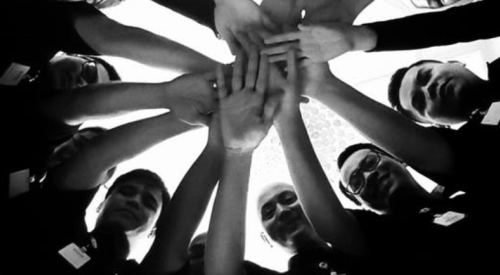A recent IBM television commercial explored the fantasy of using magic pixie dust to fix damaged servers. Sprinkle pixie dust on crashed servers, and like magic, they work. Use a little dust regularly, and the servers remain operational.
With rising interest rates, skyrocketing insurance costs and increased customer expectations, wouldn't it be nice to have magic pixie dust for the home building industry? Sprinkle a little over each subdivision, and voilà— higher-quality houses free of defects, with stellar customer satisfaction and higher profit margins, too. Unfortunately, as the IBM commercial concludes, there's no such thing as magic pixie dust.
However, as most large production builders realize, there is a solution that can help mitigate risk, increase customer satisfaction and protect profits: effective employee training.
George Casey, president of Arvida's Mid-Atlantic region, highlighted training's importance at the 2003 Benchmark conference. "People and process improvement are at the core of maximizing a home builder's return on assets," he said. "They make the difference between mediocre and outstanding financial performance. Training our people in the most important aspects of construction quality and customer satisfaction is a no-brainer. It pays multiple dividends."
Indeed, GIANTS face unique training challenges. With divisions spread across the country, regional disparity makes it difficult to provide consistent, centralized training. Consistency is critical to ensuring that every employee is on the same page. Also, most GIANTS grow by acquiring other companies, and it's difficult to indoctrinate an entire business unit, whose employees might have worked together for years and still feel loyal to their old company, into the new company's processes and practices.
To conquer these challenges, large-volume builders need a long-term approach to consistent, effective processes that are multifaceted. There's truly no magic pixie dust, no single source for all training needs. Effectively implementing training processes involves deliberate, carefully managed and administered, "blended" approaches to teaching. Commitment to doing this must come from within your organization.
An effective training program includes classroom, field and online training as well as mentoring. Underlying these initiatives is a system for tracking and assessing employees' progress. It does no good to invest time and resources in training programs unless you track whether employees are taking advantage of them and to what extent their skills — and, ultimately, your bottom line — are improving.
Classroom and Field TrainingClassroom training offers the benefits of group discussion and role-playing. But for GIANTS with many divisions, it's critical to develop a centralized approach, with consistent training materials and instructors. Having a bevy of instructors with differing materials causes problems, no matter how good the instructors, as mixed messages lead to inconsistent practices. Similarly, some things can't be learned without seeing them done in the field, so a good training program must include field training so employees can see best construction techniques firsthand.
Beazer's Brand AmbassadorsBeazer Homes' Brand Ambassador program takes a centralized approach to training the company's 3,200-member work force in customer relations. On "B-Day," when the program kicked off in October 2003, every Beazer employee, from field crew to administrative staff, headed to local movie theaters for a two-hour videoconference. As president Ian McCarthy discussed the goals and importance of creating a consistent, enjoyable customer experience, every employee heard the same message at the same time.
"We grew through acquisitions and had a patchwork of policies and procedures in place," says Bill Thomas, vice president/learning and development. "The Brand Ambassador program develops a more consistent customer experience across the company."
The program follows a disciplined approach focused on the long term. At the kickoff, the program included three two-hour sessions. Local management trained in using consistent materials facilitated the instructor-led sessions. The goal was to get all employees on the same page about values, the new brand promise and how to build trust with each other and with customers.
Beazer wrote video scripts and hired actors to illustrate typical scenarios relevant to Beazer's practices. The company now is undertaking the next stage: determining the replicable processes of each job function that deals with customers and then creating customer-centric training around each function. For example, each employee in the warranty department will use the same processes in their daily tasks.
"The ultimate goal is to create a consistent customer experience across 30 divisions," Thomas says. "The benefits are market penetration and customer service. Customers have family and friends in other cities, and we want referral experiences to be the same."
Online TrainingGetting your entire work force into the same place to hear the same message can be a logistical nightmare. Because Beazer has 30 divisions, it emphasizes Web-based self-study. Beazer offers "boot camp" classroom training for up-and-coming construction personnel, but this benefits only about 15% of its nearly 1,000 construction personnel annually. To fill the gap and provide construction quality training to the other 85%, Beazer offers online courses that employees can access 24/7 from multiple providers.
MentoringThe individualized attention of mentoring brings critical benefits to any training program. One-on-one learning allows the topic, approach and pace to be tailored. In addition, mentoring encourages good internal relations.
Pulte Homes takes an interesting approach to mentoring. Employees with a penchant for leadership enter the Top Gun program, which develops leadership skills through classroom training. Top Gun graduates then mentor junior staff on the same leadership skills taught in the program. This process increases the number of employees exposed to Top Gun training while facilitating good employee relations.
Tracking and AssessmentYour training process should include knowing how each employee is being trained — what each has done and needs to do, and how he or she has benefited.
However, varying assessment levels require different strategies. A simple survey can tell you whether employees like the training. Online courses can test employees immediately to confirm their understanding of the material. Ultimately, however, you must observe employee behavior and learn the answers to questions such as these:
- Have those who have been trained changed their behavior for the better?
- Do you have fewer customer complaints because employees were trained how to manage customer expectations?
- Are there fewer construction defects in your wall assemblies thanks to training on proper window installation and flashing?
Answer these questions affirmatively, and you can begin to measure the economic benefits of such improvement and compare the savings with your training investment. It might seem daunting to undertake, but for years GIANTS have leveraged their size for better landholdings and lower labor and materials pricing. It's time they take a closer look at their employees.
BuildIQ provides online training for production builders. More information can be found at www.buildiq.com.












